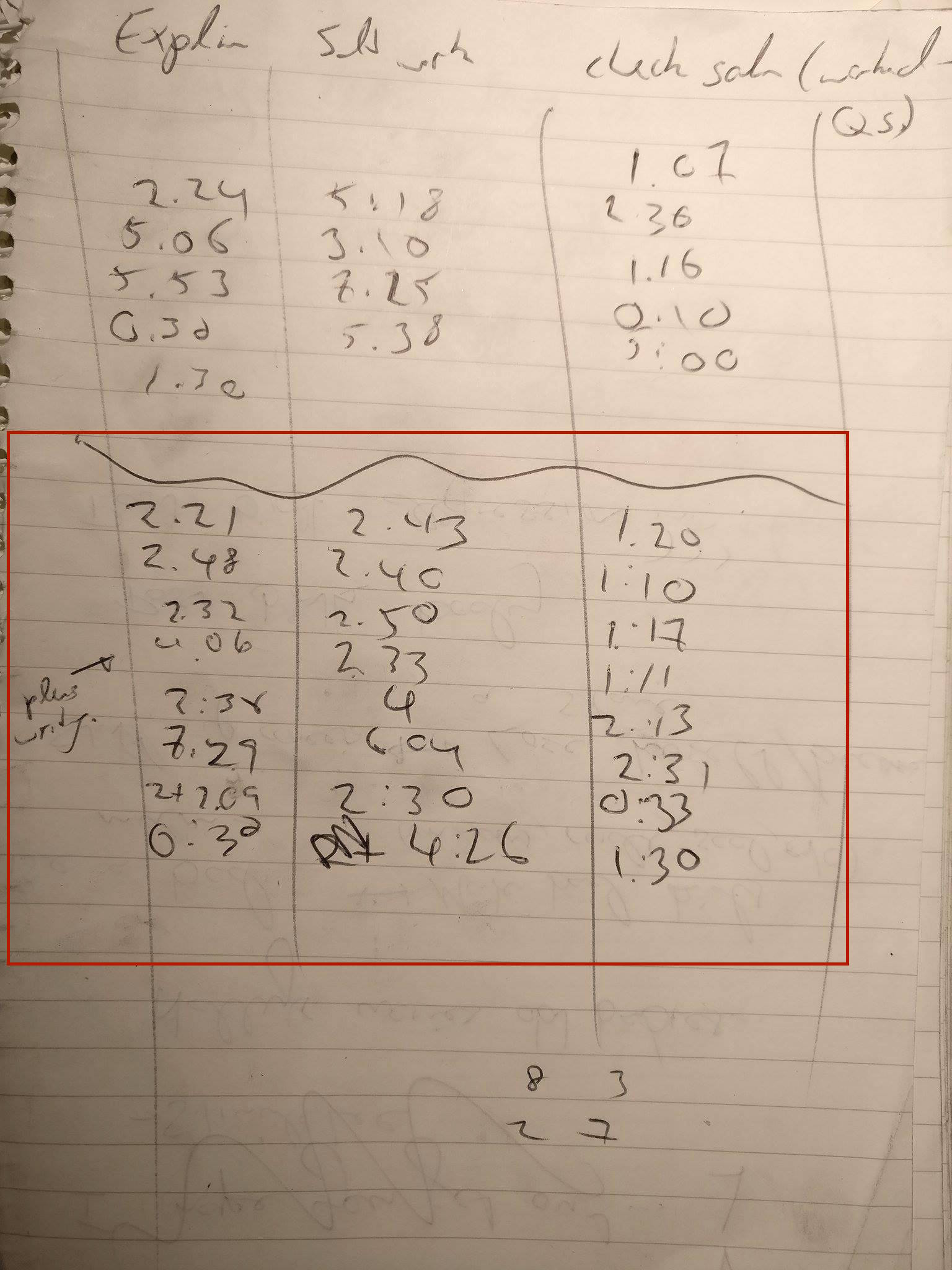The second recommendation in Rosenshine’s ‘Principles of Instruction is “Present new material in small steps with student practice after each step”. The basis for this recommendation is the fact that working memory is limited and, for learning to occur it’s important to avoid overloading working memory. But that isn’t the focus of this post. In this post I just wanted to share what ‘new material in small steps with student practice after each step’ can look like in the classroom.
As a rule of thumb, the longer a teacher talks for the more likely they are delivering sufficient information to overload their students’ working memory. As I reflected upon this point, prompted by Craig Barton’s in-depth interview with Kris Boulton recently, I found myself thinking, ‘I wonder how long I talk for?’ It was time to collect some data.
Next lesson I split my notebook into three columns ‘explain’, ‘student work’, and ‘check solution’ (I always teach my maths lessons in an ‘I do’ then ‘You do’ format, then go over the solutions as a class), then I got to recording! First class I got distracted and fell off the timing bandwagon (first half of the page) but second class I remembered to stay on task and that whole class (90 mins) is recorded in the image below (red box).
To set the scene, I wanted students to be able to answer the exam question presented by the end of the lesson. This required them to be able to go from a transition diagram and an initial state matrix to the result after multiple periods with or without the addition of extra units each period, as well as determining the result of such transitions ‘in the long run’, and working backwards in such a relation. I split this up into the following sub-steps for the purposes of instruction.
- Constructing a transition matrix from a transition diagram.
- Applying a transition diagram to interpret a transition
- Applying a transition matrix to interpret change after one transition
- Understanding transition matrices as recurrent relations (And results after multiple periods with a formula)
- ‘In the long term’: Steady state solutions to Transition matrices
- Results after multiple periods (using brute force, that means with a calculator)
- Transition matrix modelling when the total number of units changes.
- Working backwards in matrix multiplications
The astute observer will note that the total time adds up to about 60 mins. The additional time was taken up with approx. 20 mins of revising previous content and 10 mins talking about an upcoming assessment and doing a ‘brain break’.
Below is the lesson as I presented it, with the timing for each segment added in italics (images weren’t in the original as students had all questions in front of them. I added them for readers here)
I found it really valuable to look at the timing of my lessons in this level of detail. I’d love to know if it’s prompted any similar reflections for you.
References:
Rosenshine, B. (2012). Principles of Instruction: Research-Based Strategies That All Teachers Should Know. American Educator, 36(1), 12.
